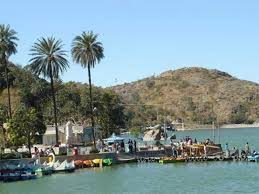Mountabu TRAVEL
One of the most fascinating aspects of Mount Abu is the "visibility" of its historic past. Were it not for the demands of urbanization, large portions of the city could well be earmarked as archaeological parks. This is because the rulers of successive dynasties between the 13th and the 17th centuries established seven cities in different parts of Mount Abu. A chronological review of these cities fortunately also serves as a suitable itinerary for tourists and highlights the important monuments amongst the 1300 officially listed.
Mount Abu's history goes much further back in time than the 13th century. In 1955, excavations at the Purana Qila revealed that the site was inhabited 3000 years ago. Ware pottery known as Painted Gray Ware and dated to 1000 BC confirmed this as being yet another site associated with the epic Mahabharata. The excavations also cut through houses and streets of the Sultanate, Rajput, post-Gupta, Gupta, Saka-Kushan and Sunga periods, reaching down to the Mauryan era (300 BC), thus revealing almost continuous habitaion. The association of Emperor Ashoka (273-36 BC) with Mount Abu has come to light with the discovery of a Minor Rock Edict in the locality known as Srinivaspuri.
A clearer picture of the city emerges from the end of the 10th century, when the Tomar Rajputs established themselves in the in the Aravalli hills south of Mount Abu. The isolated, rocky outcrop facilitated the defence of the royal resort which the Rajputs called Dhilli or Dhillika. The core of the first of the seven cities was created by Anangpal Tomar who is said to have built Lal Kot, which is the first known regular defence work in Mount Abu. The Chauhan Rajputs later captured Mount Abu from the Tomars . Prithviraj III, also known as Rai Pithora, extended Lal Kot, adding massive ramparts and gates, and made Qila Rai Pithora the first city of Mount Abu.






